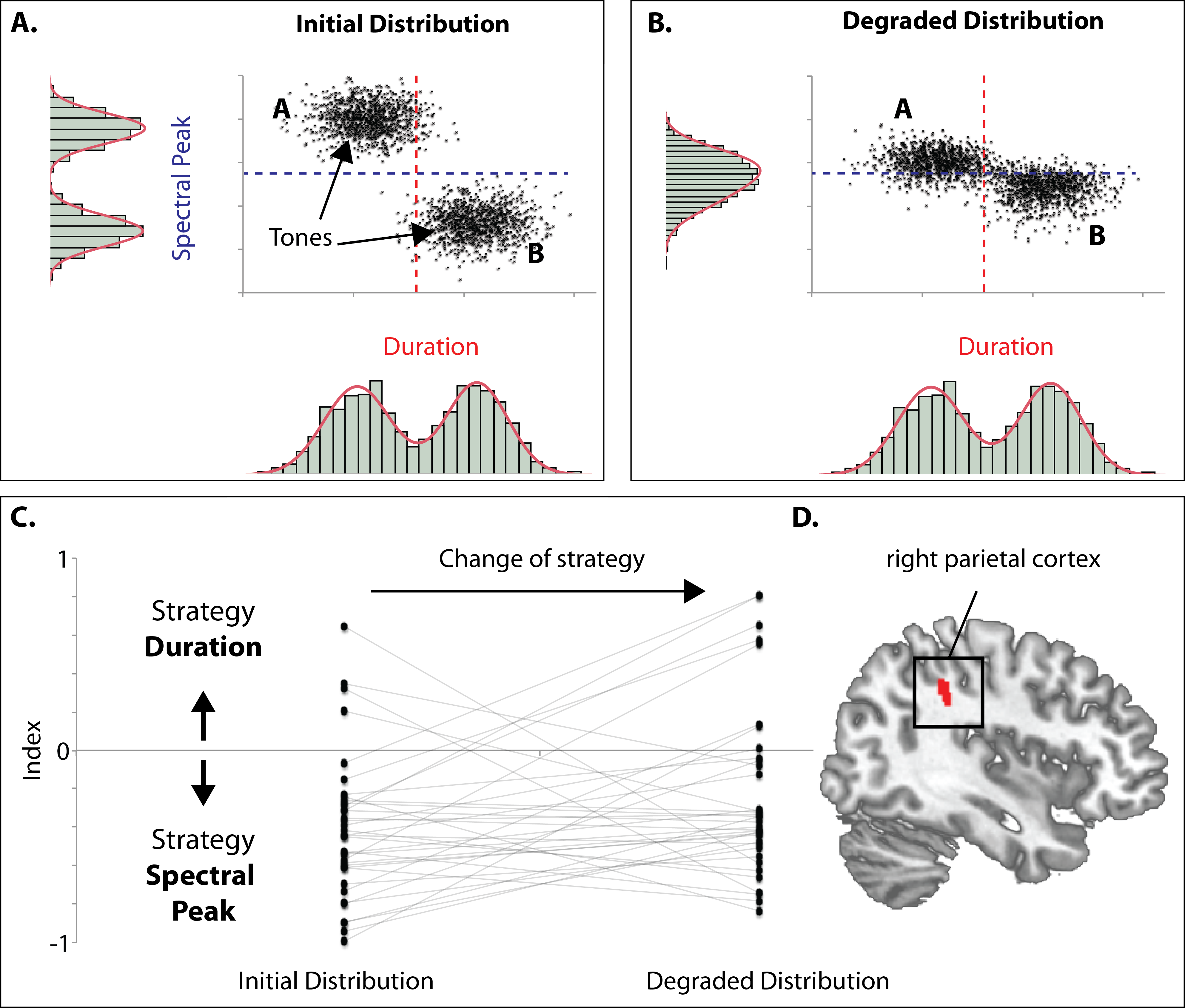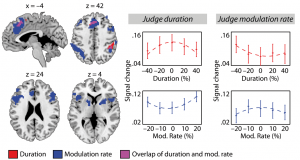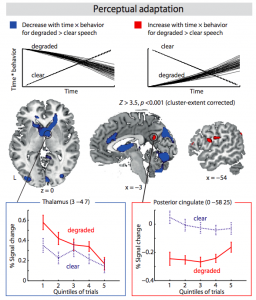Watch this space and the PLOS ONE website for a forthcoming article by Molly Henry and me;
Dissociable neural response signatures for slow amplitude and frequency modulation in human auditory cortex
Harking back at what we had argued initially in our 2012 Frontiers op’ed piece (together with Björn Herrmann), Molly presents neat evidence for dissociable cortical signatures of slow amplitude versus frequency modulation. These cortical signatures potentially provide an efficient means to dissect simultaneously communicated slow temporal and spectral information in acoustic communication signals.
[Update]References
- Henry MJ, Obleser J. Dissociable neural response signatures for slow amplitude and frequency modulation in human auditory cortex. PLoS One. 2013 Oct 29;8(10):e78758. PMID: 24205309. [Open with Read]




